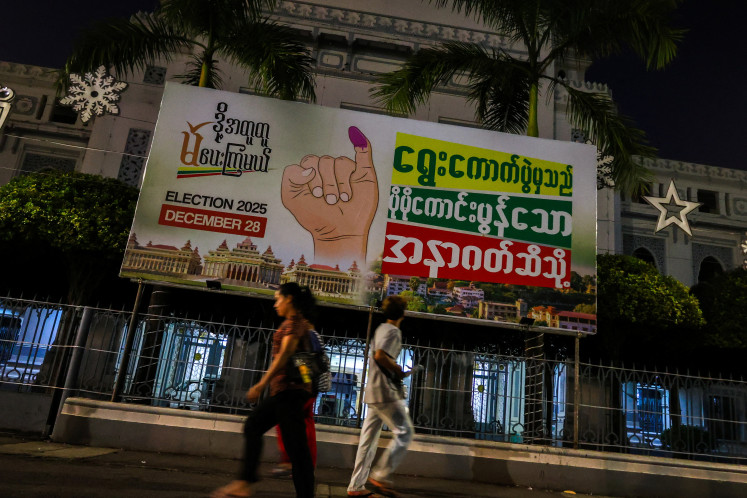Popular Reads
Top Results
Can't find what you're looking for?
View all search resultsPopular Reads
Top Results
Can't find what you're looking for?
View all search results'Keroncong' survives contemporary music
There are many theories about the origin of keroncong music
Change text size
Gift Premium Articles
to Anyone
T
here are many theories about the origin of keroncong music. The most familiar one is that the music was brought by Portuguese traders back in the 1600s and later adopted by locals.
Musician AE Sugeng Dwiharso, who has been playing keroncong for 30 years, has a different argument.
'We have played the music overseas a number of times and compared it to Portuguese folk music. Even their musicians acknowledged that keroncong is totally different than theirs,' he said.
He said that the sound of keroncong embraced all the traditional music of various ethnic groups in Indonesia, including Javanese's gamelan and Minang's talempong.
'We may have borrowed Portuguese's musical instrument cavaquinho and Hawaii's ukulele but later it developed itself into an original music of Indonesia,' said the founder of Taman Suropati Chamber and keroncong ensemble Batavia Mood, who is better known as Ages.
Aside from the claims of its origin, keroncong music has survived contemporary music and the surge of foreign music into the country because of its ability to evolve over time.
Its mobility is another added value. A keroncong orchestra doesn't need a large stage to perform or extra baggage space to carry the instruments around.
There is a wide range of colors that make it fit easily with different music genres.
The famous folk-party making music campursari is actually a combination of gamelan and keroncong.
There have been efforts from national musicians to adopt keroncong in their music such as rock band Koes Plus back in the 1970s. Bondan Prakoso & Fade2Black combined it with hip-hop music, while Keroncong Merah Putih played it along with elements of rap.
'I hope more people will learn about the music and own it,' Ages said.










